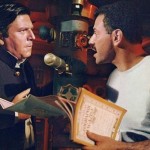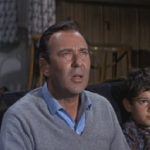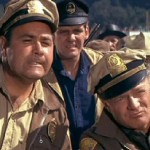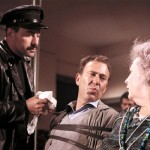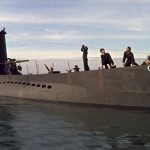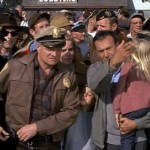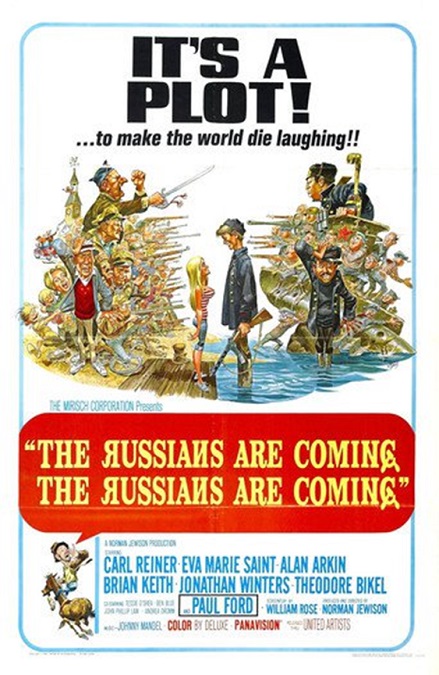
The Russians Are Coming, The Russians are Coming – 1966
I knew I was in for a zany ride when the poster for the movie was drawn by the same artist who draws for Mad Magazine. The style is unmistakable. The film was, obviously, a screwball comedy, at least by today’s standards. But back in 1966 it was incredibly poignant political satire, though I think it bordered on farce.
The movie started out as a Russian submarine gets stuck on a sandbar off the coast of a fictional New England town. The inept Captain, played by Theodore Bickel, just wanted to get a better look at America. A half-witted plan is concocted to free the sub. He sends his political officer, Lieutenant Yuri Rozanov, played by Alan Arkin, along with 8 other officers ashore so they can hijack a motorboat, which they will use to pull their vessel free.
The first people they encounter is the Whittaker family who are on vacation. Carl Reiner plays the father, Walt, an over-stressed musical comedy writer who behaves like a typical American. He complains a lot, talks before thinking, and ignores his family. The Russians hold the Whittakers at gunpoint and steal their car, which they drive to the nearest harbor with the right kind of boats.
Along the way, they cut phone lines, and leave just enough evidence of their presence to cause a panic in the locals. Through miscommunication and paranoia, the people of the town soon believe that a full scale Russian attack is under way. Red-neck Americans like Paul Ford, playing Fendall Hawkins, Brian Keith, playing Police Chief Link Mattocks, and Jonathan Winters, playing Officer Norman Jonas, go for their weapons and make ready to defend the United States. The situation is quickly blown way out of proportion. Fast-paced hijinks ensues.
When the film began, I understood that I was in for crazy, clownish behavior. So when the Russians in the Submarine began acting like idiots, I was not surprised. But my first thought was that the Russians were going to be shown as the dummies, and that the Americans would be shown as the intelligent heroes. I was pleasantly surprised to learn that the Americans were just as silly and moronic as the Russians, even more so, at times.
Like I said, to our modern ears this just sounds like a silly farce, but to audiences of 1966, it was an important film. It was the height of the Cold War and scared Americans were seeing evil Russians around every corner. But what we sometimes tend to forget was the fact that scared Russians were seeing evil Americans around every corner as well.
The film’s climax was a wonderfully literal interpretation of the Cold War attitudes of both nations. The Russians on the submarine were pointing all their guns at the Americans. The Americans were all pointing their guns at the Russians. There they stood, facing each other down the barrels of their shotguns and machineguns is a tense Mexican Standoff.
But all is resolved when a young child puts himself in danger and the Russians and Americans must work together to save him. Suddenly, the Americans and Russians are instant comrades. And when the U.S. Military finally arrives, the American townsfolk rush to their aid.
The movie had a great message that was well received. There was even a love story between a Russian officer, played by John Phillip Law, and a young American girl, played by Andrea Dromm, in which the two of them are seen running along the beach, hand in hand. See? Americans and Russians can get along. All you need is love. How very 60s of them.
And according to some of the research I did, (reading the Wikipedia article) I found that the Soviet film director, Sergei Bondarchuck, was moved to tears by the film when it was screened in the Kremlin. The film’s director, Norman Jewison, claims that it was because it was an American made film that showed the Russian people in a positive light, and the fact that free Americans were allowed by their government to make such a film was a remarkable thing.
